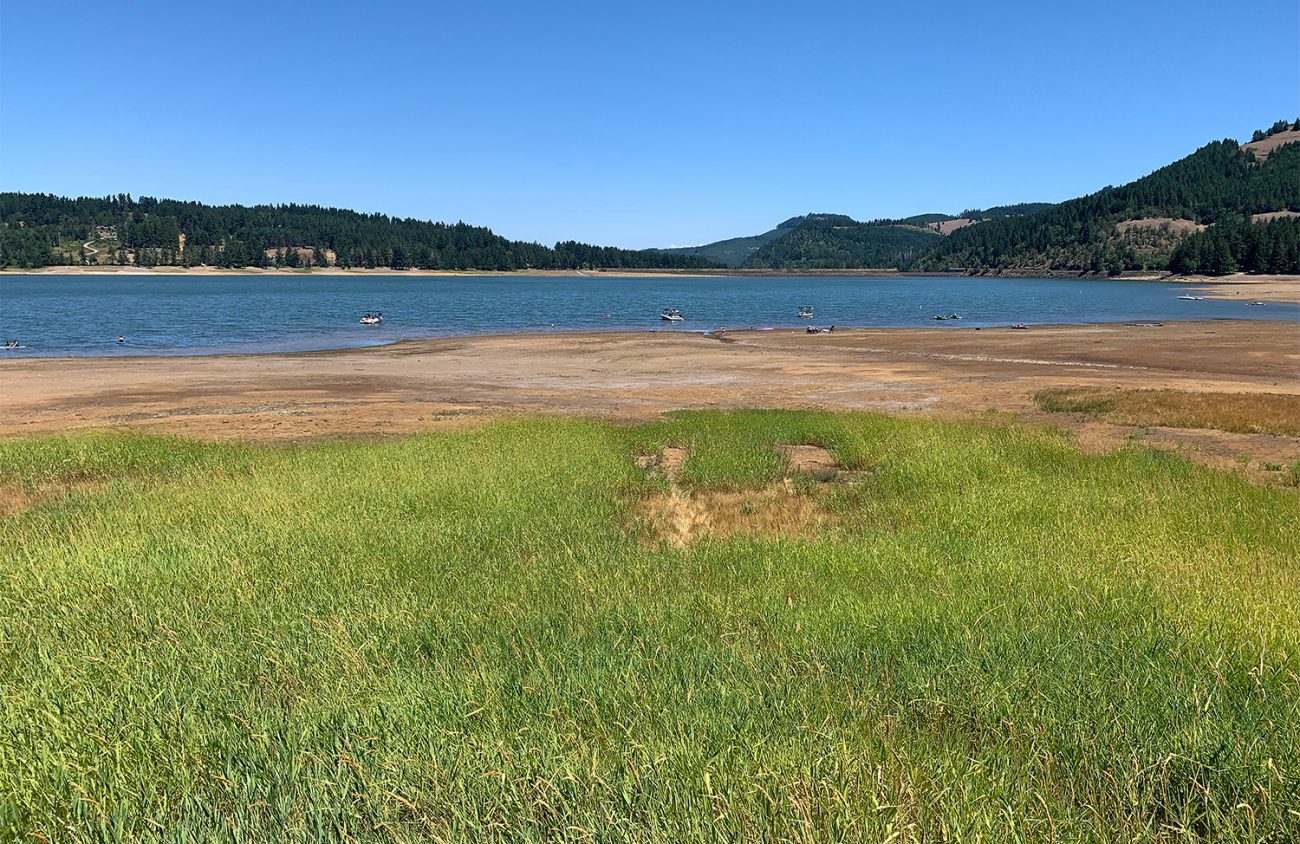The Willamette Valley is in the summer’s third heat advisory, as well as experiencing low reservoir levels. So the United Nations’ Intergovernmental Panel on Climate Change’s Aug. 9 announcement felt especially grim.
The world is on track for a global warming level of 1.5 degrees Celsius in the next few decades unless there are large reductions in greenhouse gas emissions, the IPCC reported. Among other repercussions, a warmer global climate will alter rainfall, resulting in intense precipitation and drought.
As climate change continues, Oregon will encounter years with dry summers, and without concerted action the state’s climate could become similar to Southern California later this century, says meteorologist Sean Sublette of the nonprofit organization Climate Central.
The Willamette Valley has been nearly 60 days without significant rainfall as of Aug. 12. That affects reservoir levels for 13 sites operated by the U.S. Army Corps of Engineers, though the Corps says it’s learned from past dry years how to maintain the health of the Willamette River. With so many high temperature days, the nearby mountain snowpack, which contributes about 10 percent of the water in the reservoirs, has already melted away, says spokesperson Tom Conning.
Bad water years aren’t new, and Conning points to 2015 for comparison. 2021 started strong with rainfall in February when the Army Corps began to refill its reservoirs after releasing water from the earlier months.
“Our initial refill started better, but we just didn’t get much rain the rest of that time this year,” he says. “But we were able to coordinate our releases differently and ended up having more water than what we had in 2015.”
Conning says the agency has improved its approach to water management through “adaptive management.” It was able to store more water by reducing the flow amount earlier in the summer season, he says. Then the agency was able to release water flow during the June heatwave, which helped fish and wildlife by cooling down the Willamette River by about 5 degrees, Conning says.
The 13 reservoirs within the Willamette River basin are at 42 percent capacity, Conning says. The reservoirs’ locations range from Fern Ridge to Detroit, which are used for recreation, consumption and flood management.
The last significant rainfall was 59 days ago, though there was .01 inches of rain on July 7. Because of the lack of rainfall this summer, the Army Corps of Engineers has held more public forums this year than in past low water level years, Conning says, though partly because virtual events are easier to host than in-person gatherings.
“When we’re looking at it potentially being a bad water year, we do outreach to let people know,” he says. “There are a lot of economic issues involved with people having businesses associated with reservoirs; also, safety. So we make sure people recreating know the water level might be lower than they’re used to and there might be obstructions or there might be stumps in the reservoirs.”
Early summer snowmelt and no rain is a snapshot of Willamette Valley’s future, according to Eugene’s 2019 Climate Action Plan 2.0. In the document, city staff referenced a report by New Jersey-based nonprofit Climate Central when describing the future. By 2100, Eugene’s climate will resemble that of Chino, a city located east of Los Angeles.
“Not every summer is going to look like this,” Climate Central meteorologist Sublette says of 2021. “But we’re going to have more summers like this than in the past.”
Sublette says before 2000, Oregon had more wet years than dry ones. But in the past 21 years there has been an increase in dry years, he says. The average temperatures have risen, too. He says that since 1895 Oregon’s temperatures have increased three and a half degrees. And Julys in Eugene have had a change of 1.7 degrees Fahrenheit since 1970. That increase may not sound like a lot, he says, but as context, it’s going from a handful of 100-degree days to a dozen in a year.
As temperatures rise, water evaporates faster, drying soil and plants. And that affects the hydrological cycle, the movement of water from evaporation to precipitation. “The rain comes down heavier but you have these drier periods in between,” he says. “When it rains heavily on dry soils, the rain runs off faster rather than soaking into the ground.”
The change in precipitation is likely to have an impact on water flow in the Willamette Valley. With less snowmelt and water in the rivers, it affects the temperature of the Willamette and its tributaries. “The water is shallower so it heats up more quickly in the summer,” he says. “Then you start thinking, ‘I used to fish here but now I can’t fish here anymore. The water is too shallow and the fish die because it’s too hot.’”
And with the release of the IPCC’s sixth assessment report, Sublette says everything climate experts predicted is coming to pass. “One of the things emphasized in this report is that most of the observed warming in the past 40 to 50 years is almost exclusively due to human activity,” he says.
But Eugene — and the world — won’t suddenly turn into the apocalyptic setting of Mad Max in 10 to 15 years, Sublette says.
“There’s still an opportunity to keep things from getting out of control regarding temperatures,” he says. “But we are going to have more problems to manage going forward. Things that used to happen very rarely — a very dry year — will happen more regularly than they used to.”
